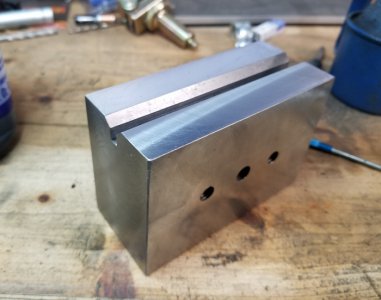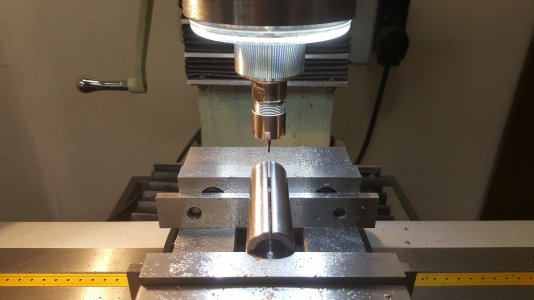- Joined
- Jun 15, 2017
- Messages
- 531
A few years back, I found a mysterious piece of steel in a warehouse a tenant had abandoned, and I eventually decided to turn it into a bench block. Today I put a v-groove in it, using a drill mill. I did not want to stress the tip of the drill mill, so I cut a slot deeper than the groove. I used a 1/8" end mill. It was Chinese HSS from Enco.
I ran the mill at around 3200 RPM, and I took cuts 0.050" deep. I moved it as slowly as I could to avoid putting pressure on it. I used a blow gun to keep chips from accumulating in front of it. It eventually snapped anyway. I tried a 1/16" mill, but it also snapped. I finished the job with a 3/16" mill.
I'm starting to wonder if there is any point in buying end mills under 3/16". So far, I have snapped two 1/8" mills and one 1/16" mill. Are these things just too weak for manual milling in steel?

I ran the mill at around 3200 RPM, and I took cuts 0.050" deep. I moved it as slowly as I could to avoid putting pressure on it. I used a blow gun to keep chips from accumulating in front of it. It eventually snapped anyway. I tried a 1/16" mill, but it also snapped. I finished the job with a 3/16" mill.
I'm starting to wonder if there is any point in buying end mills under 3/16". So far, I have snapped two 1/8" mills and one 1/16" mill. Are these things just too weak for manual milling in steel?



